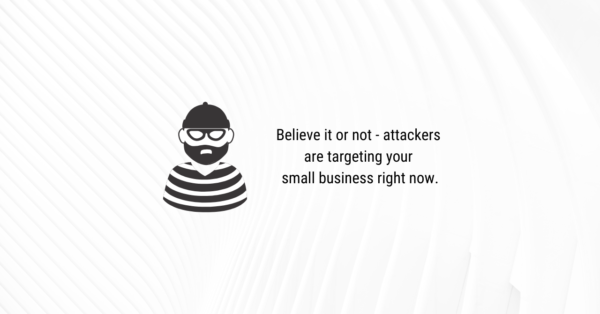The #1 Mistake Your Employees Are Making Today That Lets Cybercriminals Into Your Network
We all make mistakes. It’s a fact of life. But as we all know, some mistakes can have serious and lasting consequences – especially when it comes to business, cyber security, and the constant cyber threats that are out there.
While some businesses have invested heavily in cyber security, many have not. When it comes to network and data security, one of the most vulnerable areas of the economy is small businesses.
More often than not, small businesses simply don’t go all-in when it comes to IT security. Some fear they don’t have the budget and worry that IT security is too expensive. Others don’t take it seriously – they have an “it will never happen to me” attitude. Then there are those who invest in some security, but it’s limited and still leaves them vulnerable in the long run.
But there is one area of IT security where every business is vulnerable. You can have the greatest malware protection in the world and still fall victim due to this one big mistake.
Your employees lack IT security training.
It’s as simple as that. When your team isn’t trained on IT or network security and they aren’t aware of today’s best practices, you open yourself to major risk. Here’s why: We make mistakes.
Scammers and cybercriminals have the most success when they are able to trick people or play on the emotions of their victims. One common emotion they use is fear.
No one likes to get a message telling them that their bank account has been compromised. This is how phishing e-mails work. The scammer sends an e-mail disguised as a message from a bank or financial institution. They may tell your employee that their account has been hacked or their password needs to be changed immediately. They use fear to trick them into clicking the link in the e-mail.
So, concerned about their bank account, your employee clicks the link. It takes them to a web page where they can enter their username, password, and other credentials. Sometimes it even asks for their full Social Security number. (Scammers are bold, but people fall for them!)
As you guessed, the web page is fake. The link in the e-mail directs your employee to a page that allows the scammer to collect their data. Some thieves use it to access their bank accounts, but others sell the information for a quick buck. No matter the situation, the information has fallen into the hands of crooks.
The challenge is that phishing e-mails have gotten harder to spot. Scammers can spoof legitimate web addresses. They can make fake e-mails look like the real deal. But there are still plenty of minor details that indicate the e-mail is fake.
This is one of the MANY reasons why comprehensive employee IT training is so important. Training helps employees identify red flags. But more than that, it helps them identify changing red flags. For instance, a phishing e-mail from 2010 looks nothing like a phishing e-mail from 2020. Scammers stay ahead of the curve. They know the trends, and they know how to adapt. Your employees also need to know the trends and need to be ready to adapt.
Good IT training covers much more than phishing e-mails. It helps your employees identify security red flags across the board.
These include:
- Phishing e-mails and phone calls
- Poor or outdated passwords
- Malicious software is hidden in links, attachments, or online ads
- Poorly configured security on employee devices (a big deal for remote employees!)
- Lack of guidelines related to the Internet or social media usage on employee devices
- Outdated software or hardware
Good training is also continuous. Cyber security training isn’t a one-and-done deal. It’s something you do every quarter or twice a year. Just as you keep your business’s equipment maintained, you have to keep your employees’ cyber security knowledge maintained. After all, your employees are your first defense against outside cyber attackers. When they know what they’re dealing with, they’re better equipped to stop it in its tracks and protect your business.
The bottom line is that a lack of training is the biggest threat to your computer network and the health of your business. You need to have a strong training program in place to make sure your employees stay up to date. But you don’t have to do it yourself. We can help. Along with your team, let’s protect your business together.
Share this
You May Also Like
These Related Stories

Boost IT investment returns by avoiding these mistakes

3 places you should never cut corners with IT



No Comments Yet
Let us know what you think